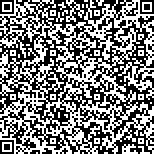下载中心
优秀审稿专家
优秀论文
相关链接
摘要

大气细颗粒物(PM2.5)质量浓度是重要的空气质量指标之一。为了促进区域PM2.5浓度监测的研究,同时拓展利用CE318太阳光度计等光学传感器反演的大气气溶胶产品的应用领域,本文首先基于北京地区2014年—2017年大气气溶胶反演的粒径尺度谱分布产品,计算表征PM2.5的粒子体积,并结合同一时间北京地区35个空气质量站点提供的PM2.5质量浓度参考值计算转换系数,对样本区间进行划分以构建转换模型。其次,利用各CE318站点数据所得转换系数及其相对精度,对研究区PM2.5质量浓度估算误差空间分布,以及转换系数偏差对估值误差贡献情况进行评价。研究结果表明,由CE318站PM2.5粒子体积与其临近空气质量站PM2.5质量浓度联合建立的转换系数是一种与气溶胶理化属性密切相关的参数指标,可将时间和空间维度上PM2.5体积与PM2.5质量浓度之间的关系映射到由理化属性主导的维度上,可用于对估值模型进行细化和分类,构建分段转换函数模型,使得各分段区间内具有较高的模型拟合精度。基于转换系数的北京地区PM2.5浓度估值的相对误差多年均值介于12.8 %—28.7 %,而转换系数相对偏差对PM2.5质量浓度估值相对误差的影响显著,二者之间具有“r”型结构。当转换系数相对偏差介于-16.3 %至24.5 %时,该偏差的出现概率约为66.5 %,使得PM2.5质量浓度估值误差在20 %以内,表明采用此种方法对相应站点的PM2.5质量浓度进行估值具有相当的精度和稳定性。以上研究结果可为地面观测站稀少区域利用卫星光学遥感开展空气质量大范围监测应用提供理论前提和技术支持。
The mass concentration of atmospheric fine particles (PM2.5) is an important indicator of air quality. This study aimed to promote regional PM2.5 mass concentration monitoring and expand the applications of CE318 sun photometer and other optical sensors in the inversion of atmospheric aerosol products. This study used the size distribution data of atmospheric aerosol particles from Beijing’s 2014—2017 atmospheric aerosol product data to extract the volume of PM2.5. These data were combined with the reference values of PM2.5 mass concentrations from 35 air quality measurement stations in Beijing to calculate the conversion coefficient, thereby establishing a conversion model. The conversion coefficients obtained from all CE318 stations and their relative deviations were used to evaluate the spatial distribution of PM2.5 concentration errors in Beijing. Results show that the conversion coefficients that were jointly created using PM2.5 volume from CE318 stations and the PM2.5 mass concentration from nearby air quality stations are closely associated with aerosol physiochemical characteristics. These conversion coefficients can be used for the classification and refinement of the correlation between PM2.5 volume and PM2.5 mass concentration. This correlation is utilized to establish a piecewise conversion function model, so that each segment has high model fitting accuracy. The mean relative errors of the estimated PM2.5 mass concentrations in Beijing based on the conversion coefficient range from 12.9% to 33.8%. The relative deviation of the conversion coefficients significantly affects the relative error of estimated PM2.5 mass concentrations because of the existence of an “r” structure between them. The probability of this deviation appearing is approximately 66.5% when the relative deviation of conversion coefficient ranges from -16.3% to 24.5%. This condition causes the errors of PM2.5 mass concentration estimation to be lower than 20%. Results show that our method is relatively accurate and stable when used to estimate PM2.5 mass concentrations at the corresponding stations. The study results can provide corresponding theoretical support and data reference for the research on ground- and satellite-based optical remote sensing of regional PM2.5 mass concentrations.

